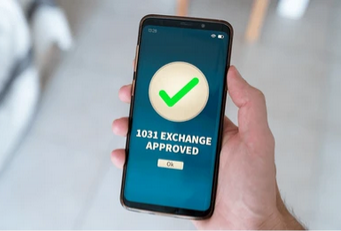
A 1031 Exchange, also called a ‘Like Kind’ or ‘Starker Exchange’, involves the owner of one investment property exchanging it for a different investment property. Because this is treated as an exchange, and not a sale, there are no taxes due on the transaction.
Why would you do a 1031 Exchange?
As mentioned above, no taxes are due after completing an exchange. If you own a piece of property that has appreciated in value, successfully completing an exchange will allow you to defer the capital gains due indefinitely. Say you bought a house ten years ago for $250,000 to generate rental income. The house is now worth $400,000. If you were to simply sell the house, you would owe capital gains taxes on the $150,000 appreciation – or about $22,000 in taxes. If, instead, you did a 1031 exchange, you could trade in the same house and use the money to buy an apartment building. Because this isn’t treated as a sale, you don’t owe any capital gains taxes.
What are the requirements?
In order to qualify for the Section 1031 treatment, you have to meet a number of requirements. You can’t just buy and sell properties and then claim it was a 1031 exchange after the fact. These are:
1. You must identify the replacement property within 45 days of selling your old property
2. You must purchase the new property within 180 days of selling the old property
3. The new property must be at least as expensive as the old property
4. The same ‘person’ must own both the old and the new property
5. You must not receive the proceeds from the sale of the old property
Let’s run through each of these in a little more detail:
45-day Identification Period: Within 45 days of selling your old property, you must create a list of possible new properties you plan to replace it with. If you wind up purchasing a property NOT on this list, your exchange will be disqualified. There is no limit to the number of properties you can identify, but most experts agree you should have a minimum of three.
180-day Purchase Period: Within 180 days of selling your old property, you must close the sale on the new property. Combined with the 45-day identification period, these two rules mean that when considering a 1031 exchange you must have a few properties in mind and then actually buy one of them.
Basis Requirement: Your new property must be at least as expensive as the old property. Since you’re transferring your basis from the old property to the new one, all of it must be ‘used up’. If you sell a $100,000 rental home, you can’t purchase an $80,000 apartment and call it an exchange. Note that you don’t have to match the prices – the new property just has to be at least as expensive. You can sell that $100,000 house and buy a replacement property for $500,000 if you want to. This rule is intended to prevent you from exchanging an expensive property for a cheaper one, deferring the taxes, and keeping the cash on the difference.
Ownership: The same ‘person’ must own both the old property and the new property. But in this case, ‘person’ is defined in the legal sense. A partnership can successfully do an exchange, as long as the legal partnership is the same for both the old and new properties. But you cannot sell an old property as an individual and buy a new one as part of a partnership. The easiest way to follow this rule is to ensure that the tax return reporting the rental income is the same for both the old and new properties.
Receipt of funds: In the time period between selling the old property and purchasing the new property, the fund from the sale must be handled by a Qualified Intermediary. A Qualified Intermediary is essentially just a middle-man who holds the money and prevents you from spending it on anything other than its intended use (similar to an escrow account). You must never actually touch the money; if you do, the exchange will be disqualified. Many banks or law firms can provide you with a Qualified Intermediary for a small fee.
Reporting requirements
After you’ve successfully completed the 1031 exchange, there is one final step to be aware of. You’ll need to tell the IRS what you did. This is done on Form 8824 and basically just tells them you transferred the basis of one property into another property and that you don’t owe any capital gains taxes on the transaction. Note that both sides of the transaction (selling the old property and buying the new one) must be reported on the same tax return, so you may need to file for an extension if you sell the old property near the end of the year and the new one won’t be purchased before April 15.
Who should I call for help?
There are a few people you’ll want to talk to before completing a 1031 exchange. For one, as mentioned above, you’ll need a Qualified Intermediary. If your intermediary knows what they’re doing they’ll walk you through most of the steps and help you make sure you follow the rules. You’ll also want to speak to your tax/financial advisor to make sure deferring the taxes and purchasing a new property fits in with your long-term goals and objectives. You’ll also need a tax specialist to help you report the exchange on your tax return (I would not recommend you fill out Form 8824 by yourself).